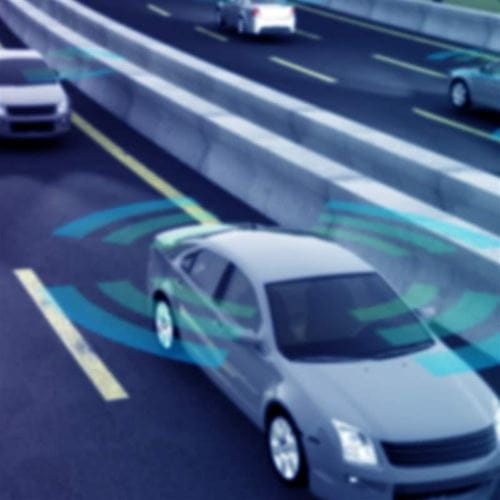Augment Your Planning Process with Scenario Planning
Technology is rapidly reshaping the transportation ecosystem: changing the way goods move, how people get to work, and travel. As advancements, such as connected and autonomous vehicles and shared mobility, are implemented on a wider scale, they pose new challenges to transportation planners. In anticipation of emerging trends, transportation planners and agencies can use scenario planning to better prepare for uncertainties and make smarter investments for future mobility. As an augmentation to traditional planning, scenario planning—a strategic approach that develops a series of futures—can help transportation agencies feel confident in investments, even as technologies and demographics change.
Why Scenario Planning Works
Unlike traditional planning techniques, which leverage point forecasts, scenario planning has planners develop plausible “futures” for what mobility will look like and work backward. Following this approach, transportation planning teams can identify a range of impactful investment and policy decisions to make that will support mobility in each future state.
This iterative process emphasizes change as a constant and focuses on how to better accommodate future uncertainty into the planning process to create a flexible environment receptive to change. What makes scenario planning so effective is that it encourages planners to anticipate change and prepare for the future rather than predict it.
This big-picture process reminds agencies that to successfully create long-term plans, it is important to invest in mobility—not just technology. By considering a broad set of trends, technologies and business decisions that could impact the future, planners and agencies can make smarter decisions and flexible investments moving forward.
The Process
Scenario planning is collaborative and includes a continuous feedback loop, inspiring discussions across teams and emphasizing relationship building. It puts significant value in stakeholder involvement, emphasizing education, awareness and understanding of infrastructure and how it may change. The process generally follows these major steps:
-
Develop a vision. In this explorative step, planners establish mobility goals and objectives for the next decade and beyond.
-
Build a strategy. In this data-driven step, transportation teams and stakeholders collaborate and assess demographic, economic, policy, technology, safety and security data sources that could impact the transportation network. It is key to engage a variety of groups—including ride sharing developers to car manufacturers, policy makers, distribution centers, transit and freight advocacy groups and more—in this phase to create the most plausible scenarios.
-
Create scenarios. Leveraging the collaborative vision and data established in the first two steps, the planning team can define the future scenarios they believe are most likely to occur. One key suggestion is to develop four scenarios to keep the process manageable yet realistic. These scenarios should be unique and differ one another to represent a variety of future states. That way, your scenarios capture a vast array of potential impacts so when planners and agencies work backward from each scenario, they can identify any existing commonalities that will lead to action items.
-
Analyze scenarios. Once the scenarios are developed, a framework model will test the impacts and possible outcomes. Planners can assess these outcomes and the degree to which they will affect future mobility.
-
Develop action items. Considering the outcomes analyzed in the previous step, the team can begin developing short-term action items and make decisions on next steps. In this final phase, because new trends will inevitably emerge, teams can revisit the previous steps to adjust the vision, scenarios or assumptions and reevaluate outcomes and path forward.

The Anatomy of a Scenario
So, what might future transit look like in the age of connected and autonomous vehicles? Scenarios could include:
1) a reality where transit vehicles such as buses and rail cars have been retrofitted, or adjusted, to build in connectivity capabilities;
2) a reality where transit systems become more autonomous to cover larger areas, providing access to community members that didn’t have access before;
3) a reality where transit systems work in unison with car sharing services to create entirely new transportation business models; and
4) a reality where no significant changes to the transportation ecosystem have been implemented.
Based on the analysis of these scenarios, action items could include: assessing which vehicles should be retrofitted to enable or improve connectivity; connecting agencies, such as highway partners, to explore building connectivity in to existing roadways and infrastructure; assessing data collection methods to better equip technologies, agencies and businesses for connecting equipment; or doing nothing.
Scenario Planning in Action
Action items are not meant to disrupt existing system processes but should focus on incremental changes that are manageable in terms of implementation and cost. The iterative nature of scenario planning will help guide enhancements to an existing system rather than overhaul it. Agencies preparing for the age of connected and autonomous vehicles should:
• Consider the potential of data. Data collection, analysis and modeling will play a large role in the age of connected and autonomous vehicles. Agencies should consider how they will handle and take advantage of the increasing volume of data emerging technologies will bring and how this information can be utilized to benefit infrastructure.
• Bring the right people to the table. Scenario planning will be new for many, so identifying champions within agencies and planning offices that can help advance planning and uphold a collaborative environment is essential.
• Think through the asset mix, test and invest. The best way to understand the impacts of emerging technologies is to test them. Piloting new technologies will help manage systems as well as bring private sector and other local or state partners together to understand the impacts of these technologies. Not to mention, it’s a great way to create and build new relationships across both public and private organizations.
Connected and autonomous vehicles may shift our attitudes and expectations about travel, technology and everything in between as they become a reality in daily life. Using the scenario planning approach, agencies can begin to consider the impact of technologies and prepare for how they might affect how we live, work and travel. Technology is a means to an end, and that end is to build better mobility, better economic development, increase safety, security, quality of life and overall access. The more we can test future impacts of technologies and trends today, the better we can inform planning and move through uncertainty.








